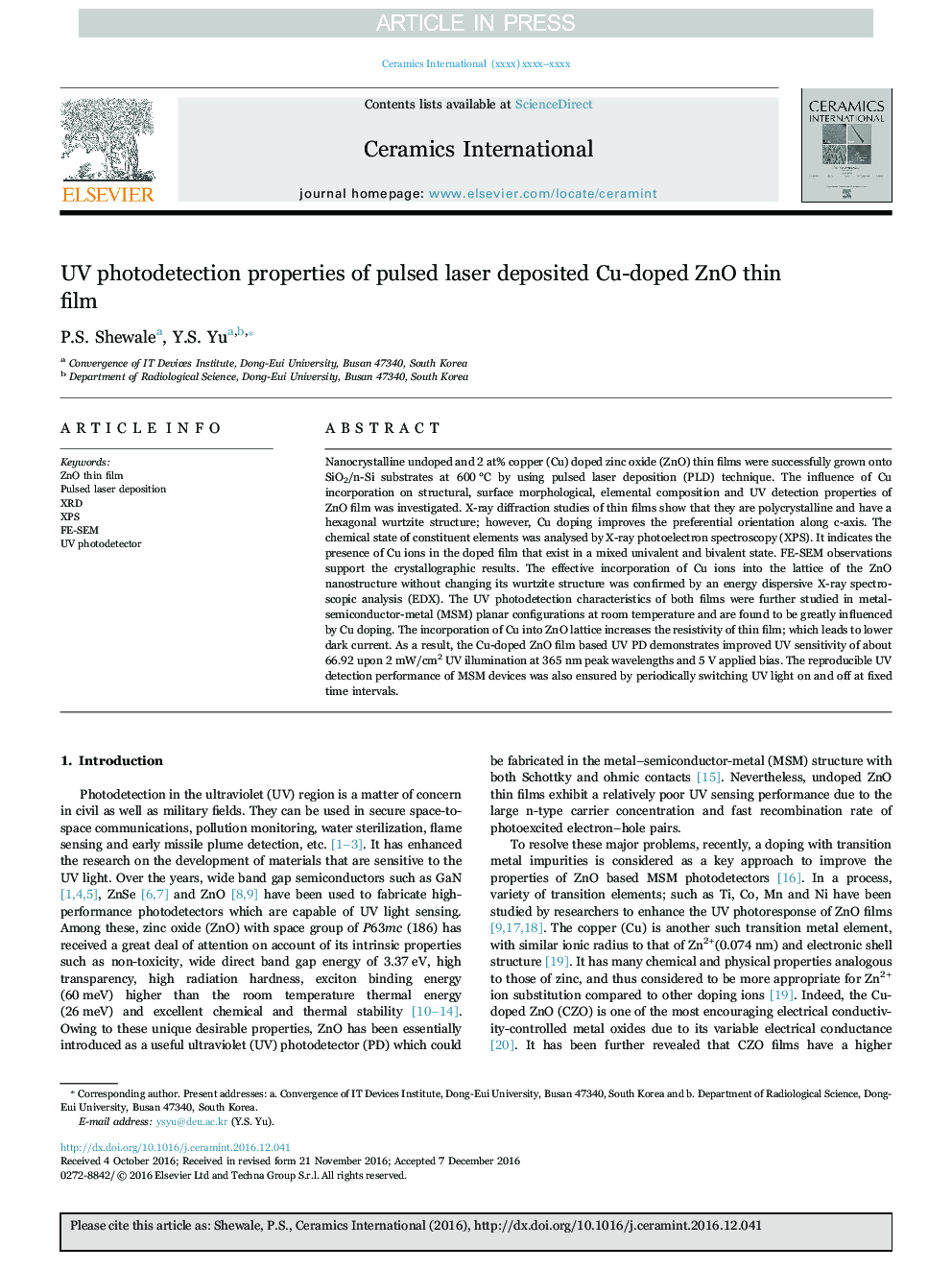| Article ID | Journal | Published Year | Pages | File Type |
|---|---|---|---|---|
| 5439074 | Ceramics International | 2017 | 8 Pages |
Abstract
Nanocrystalline undoped and 2 at% copper (Cu) doped zinc oxide (ZnO) thin films were successfully grown onto SiO2/n-Si substrates at 600 °C by using pulsed laser deposition (PLD) technique. The influence of Cu incorporation on structural, surface morphological, elemental composition and UV detection properties of ZnO film was investigated. X-ray diffraction studies of thin films show that they are polycrystalline and have a hexagonal wurtzite structure; however, Cu doping improves the preferential orientation along c-axis. The chemical state of constituent elements was analysed by X-ray photoelectron spectroscopy (XPS). It indicates the presence of Cu ions in the doped film that exist in a mixed univalent and bivalent state. FE-SEM observations support the crystallographic results. The effective incorporation of Cu ions into the lattice of the ZnO nanostructure without changing its wurtzite structure was confirmed by an energy dispersive X-ray spectroscopic analysis (EDX). The UV photodetection characteristics of both films were further studied in metal-semiconductor-metal (MSM) planar configurations at room temperature and are found to be greatly influenced by Cu doping. The incorporation of Cu into ZnO lattice increases the resistivity of thin film; which leads to lower dark current. As a result, the Cu-doped ZnO film based UV PD demonstrates improved UV sensitivity of about 66.92 upon 2 mW/cm2 UV illumination at 365 nm peak wavelengths and 5 V applied bias. The reproducible UV detection performance of MSM devices was also ensured by periodically switching UV light on and off at fixed time intervals.
Related Topics
Physical Sciences and Engineering
Materials Science
Ceramics and Composites
Authors
P.S. Shewale, Y.S. Yu,
